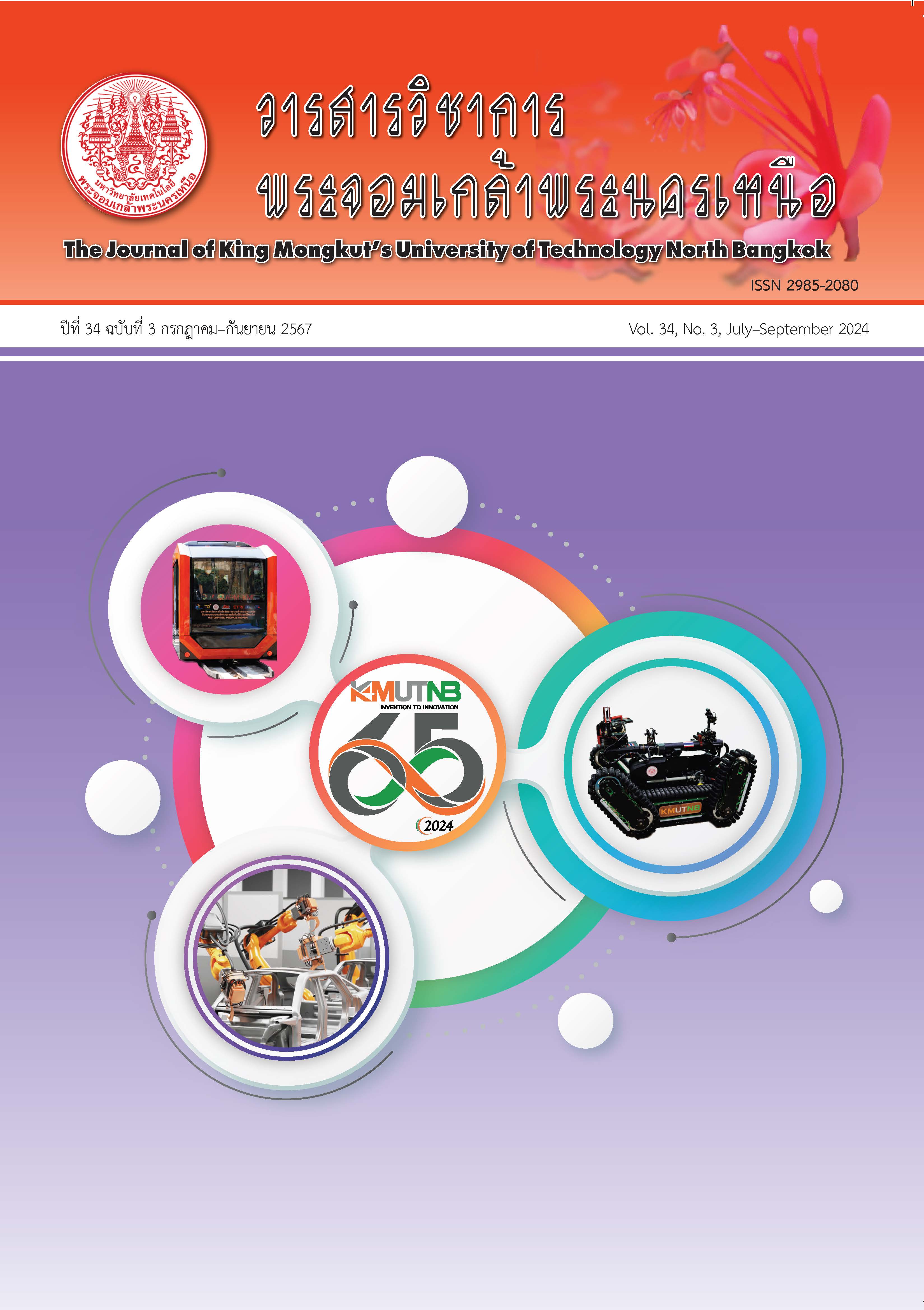A Study of Thickness and Interlayer of Laminated Glass for Bus Affecting Pedestrian Protection
Main Article Content
Abstract
Nowadays, the risk of accidents between cars and pedestrians is increasing. Most of the victims were pedestrians who were hit by cars from the front. The objectives of this research are to determine the thickness of the glass and the interlayer material of laminated glass that is suitable in the case of a pedestrian collision and explore the impact resistance of the bus windshield. The test conditions are referred to Pedestrian Protection regulation (Euro NCAP) as a guideline for the test method. Head Injury Criterion (HIC) and the energy generated to the glass are considered. The 9 different thickness of the windshields were test for this research. The test results discover that the 8 mm of laminated glass thickness reinforced with 1.14 mm of interlayer material is suitable in the case of accidents at 40 km/h of impact velocity. By means of HIC15, the test result is equal to 496.25. Moreover, there are interesting test samples with similar results, 6 mm of laminated glass thickness extra reinforced with 1.14 mm of interlayer material and 10 mm of laminated glass thickness extra reinforced with 1.14 mm of interlayer material, which are the head injury criteria 558.67 and 565.98 respectively. The head injury criterion of the two samples are not significantly different.
Article Details

This work is licensed under a Creative Commons Attribution-NonCommercial-NoDerivatives 4.0 International License.
The articles published are the opinion of the author only. The author is responsible for any legal consequences. That may arise from that article.
References
Dhipaya Insurance Public Company Limited, “Database of accidental information record between January 2012 and July 2013,” Dhipaya Insurance Public Company Limited, Bangkok, Thaikand, 2013 (in Thai).
S. Lakkam and S. Koetniyom, “Investigation of accident scenarios between pedestrians and city buses in Thailand,” International Journal of Automotive and Mechanical Engineering, vol. 12, pp. 3076–3088, 2015.
C. D. Untaroiu, M. U. Meissner, J. R. Crandall, Y. Takahashi, M. Okamoto, and O. Ito, “Crash reconstruction of pedestrian accidents using optimization techniques,” International Journal of Impact Engineering, vol. 36, no. 2, pp. 210–219, 2009.
J. Xu, Y. Li, X. Chen, Y. Yan, D. Ge, M. Zhu, and B. Liu, “Characteristics of windshield cracking upon low-speed impact: Numerical simulation based on the extended finite element method,” Computational Materials Science, vol. 48, no. 3, pp. 582–588, 2010.
J. Xu, Y. Sun, B. Liu, M. Zhu, X. Yao, Y. Yan, Y. Li, and X. Chen, “Experimental and macroscopic investigation of dynamic crack patterns in PVB laminated glass sheets subject to light-weight impact,” Engineering Failure Analysis, vol. 18, no. 6, pp. 1605–1612, 2011.
T. S. Valera and N. R. Demarquette, “Polymer toughening using residue of recycled windshields: PVB film as impact modifier,” European Polymer Journal, vol. 44, no. 3, pp. 755–768, 2008.
J. Chen, J. Xu, X. Yao, B. Liu, X. Xu, Y. Zhang, and Y. Li, “Experimental investigation on the radial and circular crack propagation of PVB laminated glass subject to dynamic out-of-plane loading,” Engineering Fracture Mechanics, vol. 112–113, pp. 26–40, 2013.
Y. Peng, J. Yang, C. Deck, and R. Willinger, “Finite element modeling of crash test behavior for windshield laminated glass,” International Journal of Impact Engineering, vol. 57, pp. 27– 35, 2013.
J. Wang, Y. Xu, and W. Zhang, “Finite element simulation of PMMA aircraft windshield against bird strike by using a rate and temperature dependent nonlinear viscoelastic constitutive model,” Composite Structures, vol. 108, pp. 21– 30, 2014.
Pedestrian Testing Protocol. (2016, January). EURO New Car Assessment Programs. Euro NCAP. Leuven, Belgium [Online]. Available: http://www.euroncap.com/en/for-engineers/ protocols/pedestrian-protection/
S. Lakkam, A. Tempiem, P. Boonyalai, and V. Voranavin, “A feasibility study of a pedestrian crash simulator powered by ironless linear motor,” The Journal of KMUTNB, vol. 27, no. 1, pp. 79–88, 2017 (in Thai).

